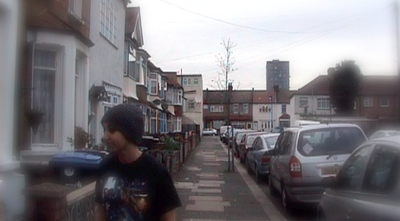An album cover is the front of the packaging of a commercially-released audio recording product, or album. The term can refer to either the printed cardboard covers or the front-facing panel of a CD package and increasingly, the primary image accompanying a digital download of the album or its individual tracks.
The cover of an album serves 3 purposes:
- To advertise the contents of the music product.
- To convey the artistic aspirations of the artist.
- In reproductions of the artwork, it serves as a primary image in the promotional efforts surrounding the product.
Early History
Around the year 1910, 78 rpm records replaced phonograph cylinder as the medium for recorded sound. They were usually issued in 10" and 12" diameter sizes and sold separately, in brown or cardboard sleeves that were sometimes plain and sometimes printed to show the producer or the retailer's name. German record company Odeon pioneered the first "album" in 1909 when it released the "Nutcracker Suite" by Tchaikovsky on 4 doubled-sided discs in a specially designed package.
In the 1920's, bound collections of empty sleeves with a plain cardboard or leather cover were sold as "record albums". The covers of these bound books were wider and taller than the records inside, allowing the record album to be placed upright on a shelf like a book, protecting the fragile record.
In the 1930's, record companies began issuing collections of 78 rpm records by one performer or of one type of music in specially assembled albums. In 1938 Columbia Records hired Alex Steinweiss as its first art director, who is credited with inventing the concept of album covers and cover art, replacing plain covers used before.
FormatSince the 1990s, the CD has become the most common form of physically distributed music products. Packaging formats vary from, including the common plastic jewel case an

d the popular cardboard and plastic combination known as the Digipak.
DesignThe cover became an important part of the culture of music. As a marketing tool and an expression or artistic intent, gatefold covers, and inserts often with lyric sheets, made the album cover a desirable "artifact" in its own right. Examples include The Beatles "Sgt. Pepper's Lonely Hearts Brigade" and Pink Floyd's "The Dark Side of the Moon". The importance of the cover design was so important that some artists specialised or gained fame through their work, notably the design team Hipgnosis. The talents of many photographers and illustrators from inside and outside the music industry have been used to produce a vast array of memorable album covers. These include Andy Warhol for The Rolling Stones, Jamie Reid for The Sex Pistols and Rex Ray for David Bowie.
 Packaging
PackagingThe album cover is a component of the overall packaging of an album. Besides identifying specific records, they serve the purpose of advertising the mucsical contents on the LP, through the use of graphic design, photography and illustration. It normally has the artist's name, sometimes in logo form; and the album title.
Occasionally, though more common on historical vinyl records, the cover may include a reference number; a branding (the label), and possibly a track listing.

 The results show that Lily Allen's "Alright Still" proved to be the most popular album cover among females and overall. However males preferred Blink 182's album cover, calling it artistic and fun looking. "Alright Still" proved to be popular due to it's female gaze and eye catching images as well as its overall "fun" tone.
The results show that Lily Allen's "Alright Still" proved to be the most popular album cover among females and overall. However males preferred Blink 182's album cover, calling it artistic and fun looking. "Alright Still" proved to be popular due to it's female gaze and eye catching images as well as its overall "fun" tone.
















